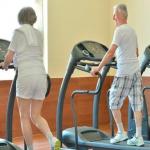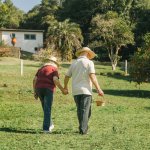Owatonna Chiropractor Helps Reduce Fall Risk with These Easy Strategies
Falling is a serious concern for people of an advanced age. It is particularly grievous for females, as they tend to have less bone mineral density as their male counterparts. Falling is a large source of pelvic fractures and complications due to blood clots in the elderly population. It is not commonly understood why older people have such difficulty with walking and maintaining proper balance. It is assumed that it is simply due to their advanced age. While this is partly correct, there is much more to the story that will be of benefit to understand.
The body’s sense of position in space is called proprioception. Proprioception is the aspect of our consciousness that we use to tell us how we are moving, how we change directions, and when we stop moving. It is what allows us to maintain our balance and know where our body is in space without us even looking. The effectiveness of the proprioceptive system in the elderly adult is compromised. In particular, the system which is responsible for the righting reflex is especially compromised.
The righting reflex is the series of complex neurological pathways that demand our head and eyes to be level to the horizon at nearly all moments. It is comprised of 5 major input pathways. First, the eyes themselves provide tremendous volumes of information as to where our body’s. You can think of them as a built-in bubble level for our brain to make corrections to our head’s position. Second, the inner ear plays a vital role in balance and proprioception. The crystal in our semicircular canals send signals to our brain when we change position and accelerate or decelerate. Third, the nerve centers in the muscles of the upper neck called the suboccipital muscles provide a great deal of proprioceptive input to the brain. Fourth, the proprioceptors in the knee joint serve to send back information about the lower limbs. Lastly, the nerve centers in the bottom of our feet give us information about the surface we are walking on.
All these neurological pathways come together and culminate into your sense of position and balance. As we age, we tend to lose sensation in the bottom of our feet as well as in our knees. This reduces the total systems with which our brain must calculate where we are in space to 3 rather than 5. Misalignments in the neck compromise the mechanics and muscular activity of the suboccipital triangles and can damage the signals to the brain from the neck, further diminishing the ability of the brain to maintain balance.
Essentially, many older adults are operating on only 2 of the 5 systems which our brain uses to maintain whole body balance. When the surface which is being walked on becomes uneven or slippery it becomes very easy for an elderly person to lose balance, fall, and become injured. To solution to prevent this catastrophe from happening is to reintegrate the 3 diminished neurological pathways, so that the brain is better able to understand proprioception and make proper balancing decisions.
Single leg balance exercises are great for restoring the sensation of the feet as well as the knees. Additionally, it is a great idea to get your blood sugar levels checked for possible undiagnosed or mismanaged diabetes mellitus which can nerve damage to the bottom of the feet and contribute to the lack of sensation. By gaining control over blood sugar issues proper sensation can be maintain and restored. Chiropractic adjustments are also great for restoring proper alignment and movement to the joints and muscles of the upper neck. If you or a loved one are experiencing routine falls or are concerned about falling, then please consider a consultation with a qualified chiropractor or physical therapist who is experienced in performing single leg balance exercises. Trust your local chiropractor for specific adjusting of the neck.
About the author:
Dr. Joshua Burnham sees many patients with chronic pain disorders. He is an Owatonna chiropractor that specializes in the Gonstead Technique.
More to Read:
Previous Posts:
Next Posts:




